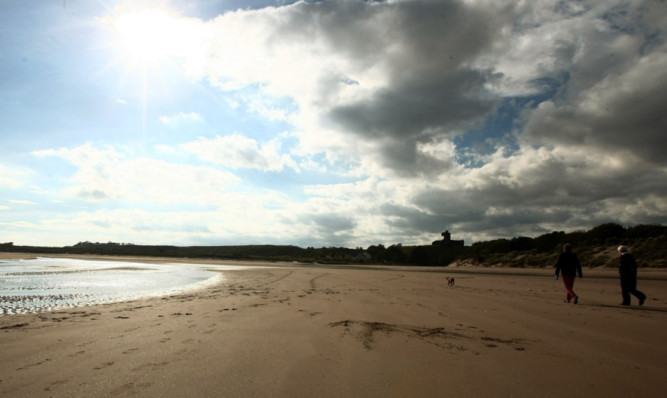A popular Tayside beauty spot was one of only two of Scotland’s 84 designated bathing waters to fail pollution tests.
Lunan Bay and Heads of Ayr failed for the overall 2014 season following the impact of the tail end of a hurricane.
Lunan Bay’s failure is being blamed on higher levels of diffuse pollution run-off caused by heavy rainfall in the area in the days before sampling.
Of the other 82, 36 were mandatory passes and 46 reached the higher guideline standard.
Holyrood’s environment and climate change minister, Paul Wheelhouse, said: “Some beaches may not have met water quality aspirations, but it is typically the case that they may fail to meet the desired standard only once or twice a year.
“Where water quality is predicted not to meet the desired standard due to forecast severe rainfall, our investment in a network of electronic signs at many of our popular beaches continues to provide accurate daily information to bathers and water sports enthusiasts, and we must continue to build on the provision of such information.
“Scotland is continuing to prepare for the tighter European bathing water quality standards that come in next year along with a new classification system for bathing waters.”
The majority of Courier Country beaches achieved the higher guideline standard.
Arbroath (West Links) and Stonehaven received mandatory passes, while Carnoustie, Monifieth and Montrose reached guideline standard.
Broughty Ferry beach also achieved guideline standard.
In Fife, Black Sands and Silver Sands in Aberdour were classed as guideline along with Anstruther (Billow Ness), Burntisland and Crail (Roome Bay).
Also achieving guideline in Fife was Elie (Harbour) and Earlsferry, Elie (Ruby Bay), Kinghorn (Pettycur), Kingsbarns, Kirkcaldy (Seafield), Leven and St Andrews (East Sands and West Sands).
Elsewhere in Fife, Kinghorn (Harbour Beach) was mandatory.
Calum McPhail, head of environmental quality at the Scottish Environment Protection Agency, said: “While we are disappointed that two bathing waters failed this year, I think it’s important as we move towards the revised standards and classifications in the new directive next year to look at how far we’ve come in understanding the environment and tackling the pressures on water quality.
“Whether it’s working with local farmers and land managers to reduce agricultural run-off or working with Scottish Water to identify improvements to their infrastructure, every year has brought further steps towards better water quality.”
This is the last time reporting will take this format, which has been used since the introduction of the bathing water directive 26 years ago.
